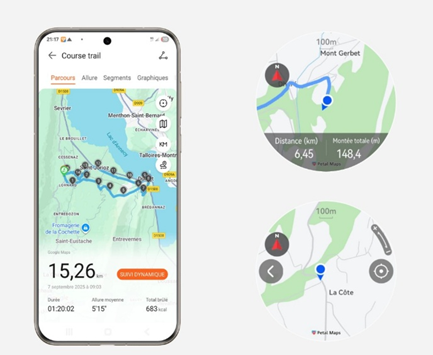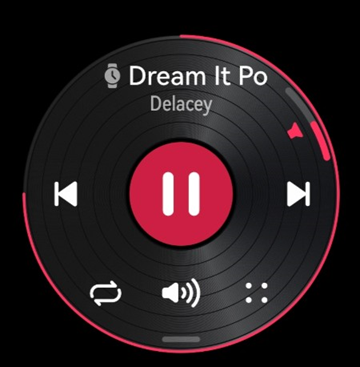Marathon training necessitates accuracy, dedication, and smart data. A well-equipped wristwatch may serve as your on-wrist coach, coaching you every step of the way until race day. However, not every watch is designed to go the distance. Runners require special qualities that facilitate systematic training, monitor recuperation, and ensure consistent performance over extended distances. Choosing the appropriate model means the difference between scattered data and focused progress. This checklist covers the necessary smartwatch features for marathon training, how to incorporate them into your training plan, and the best methods to utilize your device on long runs and race day.

What Features Should My Smartwatch Offer?
GPS Accuracy, Battery Life & Durability
Reliable GPS is essential for tracking distance and pace when exercising. Look for smartwatches with multi-band or dual-frequency GPS for better accuracy in densely populated areas or forested paths. Long runs require sufficient battery life, particularly during marathon simulations and race day. Models that last more than 20 hours in GPS mode are great. Quick-charging features facilitate back-to-back sessions. Rugged design is also important—water resistance, scratch-proof screens, and impact protection make the watch effective even during rigorous training sessions. Whether you're braving the weather or counting weekly miles, these basic features ensure your wristwatch doesn't lose signal or battery mid-run.
Heart Rate, Training Metrics & Recovery Insight
Heart rate monitoring helps to arrange workouts into zones, which improves endurance and aerobic base. Look for wrist-based sensors that are highly accurate or that are compatible with chest straps. Aside from heart rate, smartwatches should include VO2 max estimations, lactate threshold, and training load data. These measurements guide pace and measure progress over time. Post-run recovery tools such as HRV tracking, sleep analysis, and readiness scores aid runners in avoiding overtraining. Some watches even recommend rest days or mild exercises depending on your current exhaustion levels. These insights maintain your body in balance and allow your training plan to change based on how you feel, not simply what's on paper.
Smart Features, Comfort & Usability
An excellent smartwatch for marathon training should be easy to use while moving. Buttons should operate with sweaty fingers or gloves, and the display should be viewable in sunshine. A lightweight, breathable strap eliminates discomfort during extended workouts. Smart features such as music playback, voice assistants, and contactless payment make it easier to complete errands after a run or train without your phone. Customizable data panels allow you to focus on the most relevant parameters while running, such as current pace, heart rate zone, and remaining distance. Syncing with popular programs such as HUAWEI Health guarantees that all of your sessions are correctly recorded and evaluated.
How to Use Your Smartwatch in Your Marathon Training Plan
Setting Up Training Zones, Pace Targets & Long-Run Coverage
Start by defining heart rate zones and pace thresholds using a recent time trial or fitness test. Input this data into your smartwatch so it can give real-time feedback during intervals, tempo sessions, and recovery runs, whether you're following a marathon plan or a training schedule for 10k run. Set pace alerts to avoid starting too fast or too slow, especially on long runs. Enable GPS-based auto-laps to help you break down big routes into digestible bits for better pace. Use the route planning function to create elevation-based maps of long-run courses. Some watches also include diet and water reminders, which are essential for marathon training. These options work together to guarantee that your training block progresses in a disciplined and purposeful manner.
Monitoring Progress, Recovery & Avoiding Overtraining
Your wristwatch turns into a potent tool for accountability when you monitor patterns over several weeks. Track your fitness improvement, weekly mileage, and intensity distribution using it. Features like recuperation time and training load status make it easier to determine whether you're exerting too much or too little effort. Sleep monitoring and HRV ratings provide daily information about how effectively your body is managing the strain of exercise. Modify your plan if your watch indicates that you may be overtraining. This data may be used to set up guided breathing sessions, rest days, or lower-intensity runs. On race day, use the watch to train more intelligently and sustainably rather than merely harder.

Race-Day & Long-Run Strategies with the Watch
Before race day, test your watch settings on critical long runs. Lock in pace alerts to keep on track, preload your route map, and schedule drink or gel reminders depending on time or distance. If available, use race mode to simplify data fields, minimize distractions, and optimize battery life. Download music playlists or podcasts for inspiration without using your phone. Make sure the screen layout displays all of the information you'll need throughout the race, including your current pace, elapsed time, distance, and heart rate. On marathon day, refrain from tapping too many buttons or switching displays. Allow the watch to guide your strategy while you concentrate on form, fuelling, and finishing strong.
Conclusion
Training for a marathon requires months of dedication, and the appropriate wristwatch makes each session more efficient and informative. Concentrate on the essentials—accurate GPS, extended battery life, dependable heart rate monitoring, and recovery options. Comfort and usefulness throughout high-mileage weeks are equally important as advanced training data. Smart setup allows you to correctly pace, track progress, and avoid typical training hazards such as overexertion or burnout. Use your watch for both planning and feedback. Every run helps to fine-tune your strategy. Whether you're aiming for a personal best or running your first marathon, this checklist will guarantee that your smartwatch supports every stride.